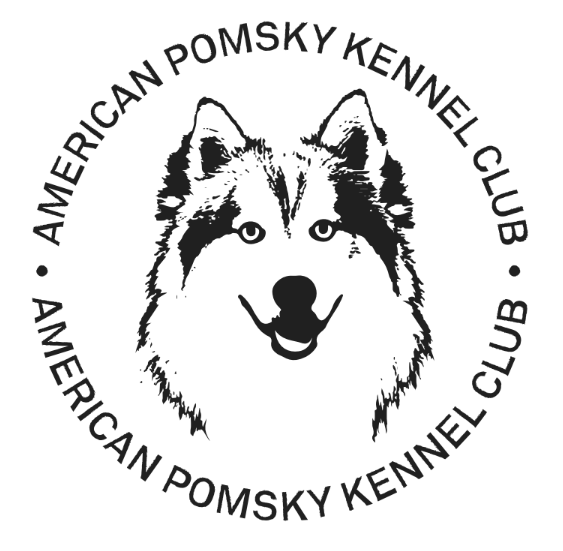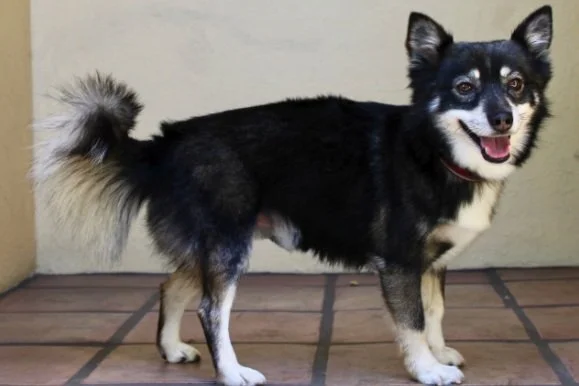Breeding Costs
Many people are surprised with the cost of Pomsky puppies. The range of people selling Pomskies can be $800-$6000.
Why is there such a range? Why do some breeders charge more than others?
Courtesy of www.aspca.org
The reason why there’s a large range in puppies:
THE BAD
Some people simply find 2 dogs, a male and female, and throw them together. These dogs are often far too young, untested, not to breed standard, and the purpose of having puppies is purely profit. They don’t care about health testing, do the absolute bare minimum raising them, provide no socialization, or raise them on such a large “production line” type facility that they sell for cheap to keep moving, knowing profits come in quantity.
The lower end of that scale indicates puppy mills or dog factories. These dogs live in terrible living conditions, are bred until they cannot anymore, and then dropped off at a shelter or euthanized. Read some of those stories at the ASPCA.
All breed-specific clubs do not allow pet store and broker transactions. Let’s repeat that.
Breed-specific kennel clubs that carefully watch over the welfare of the future of that particular dog breed, forbids breeders from sending their dogs to pet stores.
This means, that the only breeders that supply pet stores are puppy mills and large-scale commercial dog farms that don’t care about the welfare or future of that breed. Pet stores purchase the puppies for $400-800 and then sell for $3000-$6000.
DID YOU KNOW? It’s often cheaper to purchase through a small breeder than a pet store.
This is why you should never support a Pet Store. “Rescuing” a puppy from a pet store only encourages and monetarily supports the bad breeder to continue their bad practices.
A few supporting articles about pet store puppies.
https://www.thedodo.com/7-reasons-not-to-buy-a-puppy-f-539978528.html
https://www.spcamhc.org/resources/animal-advocacy/why-you-shouldn%E2%80%99t-rescue-a-puppy-from-a-
THE GOOD
Courtesy of Golden State Pomskies
On the flip side of this coin, you have the breeders that have created a business name, purchased the best quality dogs they can get, often easily $12-$15k per breeding pair. Performing not only DNA tests but also OFA Certified Health Tests (www.ofa.org), spend extraordinary amounts of time socializing the puppies, doing basic training, litterbox/potty training, and more. They hire accountants to handle their accounts, organize their expenses and pay taxes as they should.
These breeders spend countless hours sifting through potential customers to find the right homes for their puppies, interviewing them, and sending puppies home with a strict spay/neuter contract.
The adults live full lives in the homes of many small hobby breeders, or in outdoor heated/cooled facilities that protect them from the elements while giving them plenty of room to play. The adults are generally retired after 4-6 litters to a forever home, or not bred at all, if they fail the OFA tests or show some reason that they are not fit to breed, such as a temperament issue.
The breeders even cry when the retired dogs go to a forever home.
It’s these types of breeders you want to support. Those that have poured their heart and soul into their program.
COSTS
We’ve broken down some of the expenses for a well-run breeding program. This varies with location, local vet costs, the type of program the breeder has, size of dogs, etc.
Most breeders look for their new foundation dogs from breeders that fully health test the parent dogs. Raising a dog for 2 years, expending the extra $500-1500 per dog for tests, only to fail is a huge detriment to a program. Breeders pay the puppy price, which is often the most expensive puppy in the litter because they want the best, plus the breeding fee for the right to breed the line. Breeding quality puppies can range $3000-$8000, and some have even sold as high as $25,000.
FOOD/TREATS/TOYS:
Pomskies do best on a good quality of grain-inclusive food. To keep them mentally stimulated, treats and toys are important to their mental health. For a single pair of Pomskies, you can expect a bag of good quality dog food for $40-60/month, $20/month in supplements/vitamins per dog. Plus another $50-ish in treats and toys. $110-140/month.
ADULT DOG VET EXPENSES (varies by location/vet) :
Annual vaccinations $100-300/dog
Heartworm medication $30-45/dog/month
Flea/tick preventative $40-60/3 months
OFA hips/elbows/patellas $500-1200/dog
OFA Cardiac $200-500/dog
OFA Thyroid $200-500/dog
OFA CAER (eyes) $60-200/dog
PennHip $500-900/dog
Embark DNA Test $150/dog
This does not include any injuries, ear infections, UTIs, etc.
Total costs for the first year (with dog purchases) would be between $5380-$13,055 per dog. So double that, you’re looking at $10,760-$26,110 for a good quality fully health-tested breeding pair. Those dogs cannot be tested or bred until well after their 1st year. So you are out those funds for at least 1.5 years. And what happens if the dog fails one of the many health tests? They are removed from your program. If you have worked with a good breeder, sometimes they will replace the puppy, but then you’re back to square one and have lost at least a year in your program.
BREEDING/LITTER RAISING (based on 5 puppies): * = used several litters before the need to replace
Artificial insemination $600-1200/season (if needed)
Progesterone tests: $120-600 (varies with quantity needed)
Brucellosis test $100-150/each
Stud Fee: $2000-$6000 (if you did not purchase a male)
Pregnancy Ultrasound: $100-280
Pregnancy X-ray: $100-330
Whelping Bed: $400-650 *
Kuranda Bed: $160 *
Towels/blankets/whelping pads $100 *
Puppy Toys/Treats: $200 *
Whelping Supplies: $200 *
Crates for puppy training $500 *
Litterboxes: $100 *
Dewormer: $160
Puppy Food $200-400
Milk Replacer: $100
Microchips: $380
Health Exam: $400
Puppy Shots: $380
NuVet Vitamins: $80
Fecal Tests $200-500
Vet trips: $100
Laundry Soap, cleaners, disinfectants, paper towels $100
Annual pumping of septic due to disinfectant: $350
Puppy Packs $300-600
Dam supplements $150
Litter costs: $7580 - $13960 (approx $1600 of these items can be used for 10 litters before replacement)
Litters #2-10 would be in the $5980-$12360 per litter range. This would also change if you had an in-house stud male to some degree.
This is also assuming that the birthing process was easy and no c-section was necessary and no medical attention or hospitalization is needed for the puppies. C-sections are $1500-3500. Pregnant mothers and mating hormones turn the calmest dogs into fighting ones, so it’s not uncommon for there to be fights and injuries ($200-600).
If the Dam has 4 litters of 5 puppies and retires at 4 years old, the cost to raise each puppy would be approximately $1516-$2792 just to raise each puppy.
What you pay for in Pomskies is definitely what you get. Below is an example of a low-quality (cheap) Pomsky versus a good-quality (expensive) Pomsky.
But wait, what about the breeder’s time?
If they are a good breeder, they will spend an extraordinary amount of time taking care of puppies. A full week before puppies are due, as well as not leaving the house without alternate supervision the first 2-3 weeks is common for Pomsky breeders. Breeders easily spend 40-50 hours a week delivering puppies, cleaning cages/pens, playing and taking care of the puppies, socializing them, performing the ENS protocols, evaluating puppy temperaments, completing paperwork on weights/deworming schedules, taking them to the vet for their check-ups, creating legal contracts, and finding the perfect homes. This does not include any interactions with potential customers, answering questions via phone, text, email, messages, scrolling through social media for ISO posts, and website requests. Taking hundreds of pictures/videos for potential customers, managing the waitlist, and helping people decide which puppy. Providing a variety of assurances that you’re not a scammer. Collecting payments, creating/signing contracts, and so much more.
To pay for the above, the puppies would need to be sold for at least ___ to break even. Breeders should not be expected to work for free. It does not take into account unexpected expenses, fertility issues, missed heats.
Off puppy season, we spend countless hours taking photos/videos of the dogs, talking to potential customers, editing photos for our social media, working on our website, working on the accounting portion for our taxes, and our own continuing education of researching genetics and future program goals.
It is true that the longer you breed, the prices will reduce. Some of the whelping items can be re-used. Once you become established, you will be able to hold back dogs from your litters for your own use or to trade with other breeders to get new bloodlines. This is why a good reputation is vital as well, it makes the connections with other breeders and the ability to trade studdings and/or puppies considerably better.
Other Expenses:
Going on vacation is difficult at the best of times, as it’s not easy to find a dependable person to watch your animals. Many vacations are canceled/rescheduled because a female’s heat cycle is not always like clockwork and may jump by 2-3 months. Many breeders cannot work full-time as it’s impossible to carve the time out for that when you have tiny lives that need your full attention. Not having a full-time job means that health insurance may be a significant expense.
Indoor/Outdoor security equipment (cameras/motion sensors)
Subscription/applications for security monitoring
Quickbooks software
Breeder software
Photo editing software/camera
Kennel club dues
Dog Association dues
Business license fees
Google advertising expenses
Facebook advertising expenses
Website hosting
Computer equipment/printers
Accountant/bookkeeper
Legal counsel for contracts
Props for each litter
Electrical bill rises during puppy season
Annual Septic tank treatments due to puppy laundry
Yardwork due to digging dogs (some purchase expensive artificial turf)
Replacement of puppy chewed/peed on items, such as furniture, wood trim
Professional cleaning/power washing
Kennel setups
Dog sitting as needed
Dog training
Merchandise (business cards, T-shirts, bags, flyers, hats, puppy brochures)
Home air purifier to control the dog fur
Annual replacement of vacuum cleaners and mops due to the sheer load of dog fur
Sleep deprivation/exhaustion that affects all areas of life and family
Frequent detailing of the car due to the fur during transport
Mileage on the cars quickly adding up due to delivering your puppies, causing you to replace more often
Needless to say, this is not a job that pays well. It’s heartbreaking when you are accused of being a puppy mill or backyard breeder by those with an “adopt don’t shop” mentality, even when you are doing your best as a small breeder. It’s also heartbreaking when someone picks a Pet Store puppy over one of yours, simply because they were ready 4 weeks earlier or a few hundred dollars cheaper and you can tell that the dog won’t be nearly as pretty as yours. Or when you have to retire a dog you absolutely love, because they failed their patella knee test because you’re trying to do things the right way.
Pomsky breeders face outright harassment by purebred breeders at gatherings, sports events, vet offices, keyboard warriors on forums, and more with Pomskies being a crossbreed. This job is a lot of hard work! It often can be very stressful and exhausting. If we do things the right way, it’s not a get-rich-quick scheme. It takes a lot of time, a lot of money, and a lot of dedication.
What we do get out of breeding is that we love seeing our puppies’ families holding their baby for the first time, their eyes lighting up as they meet their puppy.
We gain joy seeing the spark of happiness it brings to people.
We gain pride when we see our adult puppies growing up to be beautiful, well-built, well-tempered, and healthy animals.




